Making Hortobágyi Pancakes with Savory Fillings
45 min read Learn to make classic Hortobágyi pancakes—tender savory crepes filled with paprika-simmered meat, baked and sauced—exploring technique, fillings, and cultural roots for a comforting Hungarian feast. October 08, 2025 00:08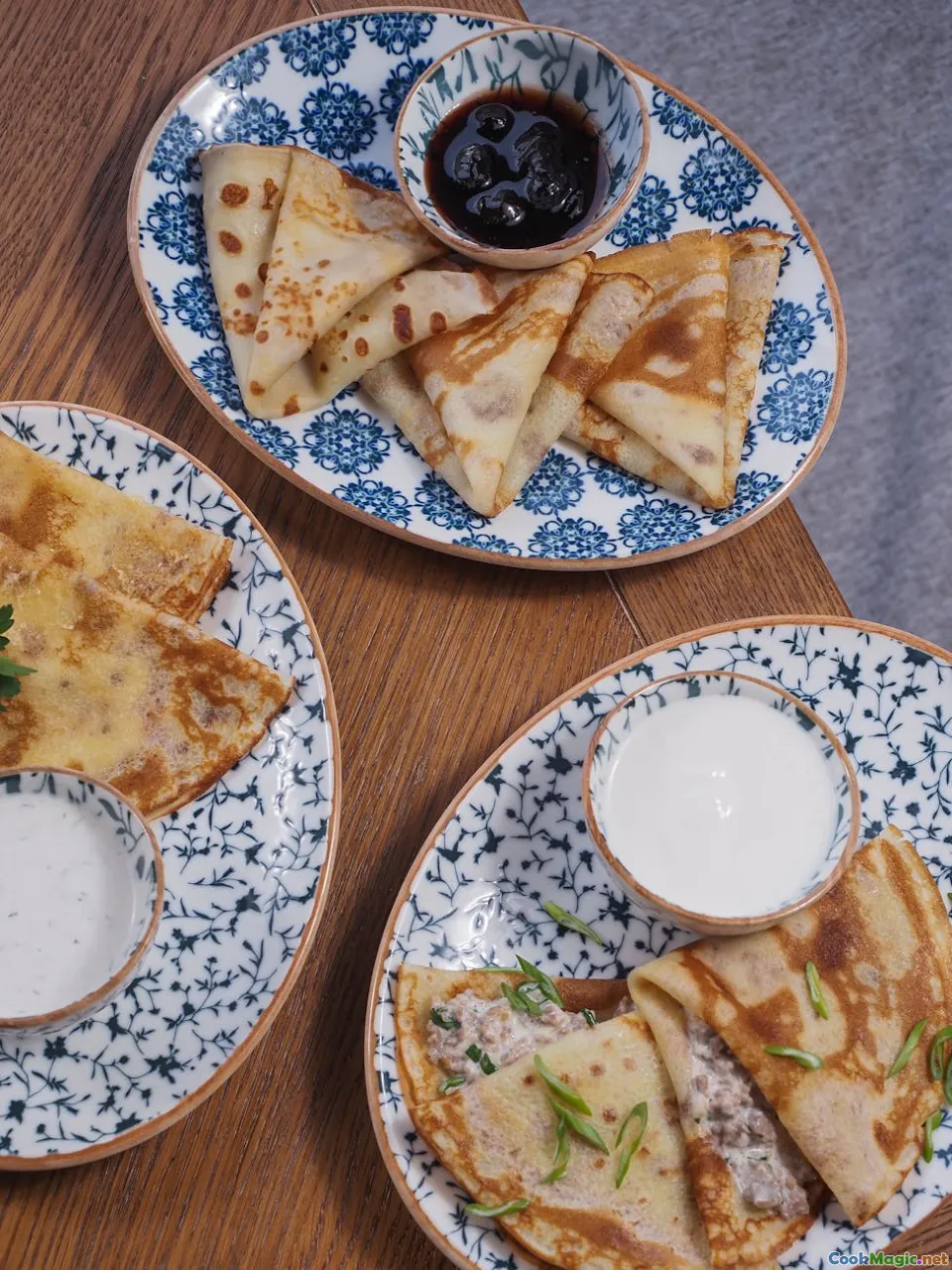
Steam on the Great Plain is a very particular thing. It hangs low, scented with hay and a whisper of paprika, and if you stand near a csárda, a wayside inn, you can smell meat surrendering to onions even before you can see the roofline. The first time I ate Hortobágyi palacsinta, the famous Hungarian savory pancakes, it was late autumn and the sky over the Puszta was the color of pewter. The plate that landed in front of me looked like a tidy parcel swaddled in a red-tinged cream, edges bronzed just enough to glow. Cutting in released the soul of a paprikás stew: onions softened to silk, tender shreds of veal, and that sweet-spicy perfume of good Hungarian paprika blooming in hot fat. The sauce clung like velvet. A dish named for the wide open grasslands, served with the intimacy of a letter from home.
The dish that wears a plain like a cloak

Hortobágyi palacsinta is a contradiction in the most Hungarian way: a French-leaning technique applied to an unapologetically Magyar stew, named after a region that did not, strictly speaking, invent it. It is a rolled or folded pancake, thin as a silk scarf, filled with a used-to-be-stew of veal or chicken, then ladled with its own paprika-lush sauce enriched with sour cream and baked long enough to mingle and set. It is not quite a casserole, not quite a crêpe course, not exactly a stew; it is all of these, and better for the union.
People sometimes call it veal crêpes, but that misses the point. The heart of Hortobágyi palacsinta is paprikás, that Hungarian technique of stewing meat with onions and paprika until the two become one hum. Think of the sweetness of slowly sweated onions, the mild heat and lipstick-red hue of édesnemes paprika, the slip of sour cream that lifts the sauce from heavy to humming. Fold that into one of Hungary’s most beloved everyday foods, the palacsinta, and you have a dish that tastes like a holiday that someone was kind enough to make on a Tuesday.
A brief, tangled history

The story most often told goes like this: Hortobágyi palacsinta emerged in mid-century Budapest, a showpiece for the city’s hospitality at a moment when Hungary wanted to tell the world who it was through food. Some say the dish was refined for the 1958 Brussels World Fair, part of a curated suite of Hungarian specialties that could travel onto an international stage. Others tie it to the iconic Gundel Restaurant beside the city park, where the kitchen elevated palacsinta from homey to haute.
What is certain is that the dish’s name is an act of romantic labeling. It was likely not born on the actual Hortobágy, that sea of grass and light in eastern Hungary, but named for its symbolic power. The Hortobágy region carries the country’s pastoral lore: long-horned gray cattle, racka sheep with corkscrew horns, the blue-shirted csikós horsemen cutting arcs against the horizon. To call a dish Hortobágyi is to invoke smoke and flatlands, an almost cinematic Hungarian-ness.
And yet, you can eat a persuasive plate of it in the heart of the Puszta. The Nagycsárda in Hortobágy National Park does a version with chicken that tastes as if the sauce has been tended for hours while the wind combs the grasses outside. In Budapest, I have eaten it in dining rooms with starched linens and at counter-seats with sticky menus. Sometimes the meat is veal, sometimes pork or chicken. Sometimes the sauce is candle-bright with paprika, sometimes a duskier brick from a splash of stock and longer browning. The dish is not one fixed point but a small constellation.
Palacsinta, palatschinken, and their cousins: a comparison

If you know French crêpes, Balkan palačinke, or Austrian Palatschinken, you are in the right neighborhood. The Hungarian palacsinta is thinner than the American pancake and more elastic than a brittle crêpe. The batter leans on milk and eggs, lightly salted, with the distinctive Hungarian trick of thinning with soda water or sparkling mineral water for a delicate lace.
Where a French crêpe might carry a béchamel-kissed filling and rest under a sauce made apart from it, the Hortobágyi symphony centers on the paprikás ragout. The sauce is the stew; the stew is the sauce. You cook onions low and slow in lard or a neutral oil. You bloom paprika in the fat the moment the onions turn translucent and the pan’s heat subsides just enough to protect the spice from bitterness. Meat goes in and is tossed in that red shimmer, then moistened with stock and perhaps a chopped tomato and a pale green pepper. Finally, sour cream softens the edges. This is the same basic movement as classic chicken paprikás, repurposed as a filling and a mantle.
Think of enchiladas in the way New Mexicans think of them: the tortilla bathing in the sauce that made the filling whole in the first place. Hortobágyi palacsinta is Hungary’s answer to that comforting calculus, only with a pancake and a paprika-sour cream equation.
Ingredient spotlight: paprika, lard, and tejföl
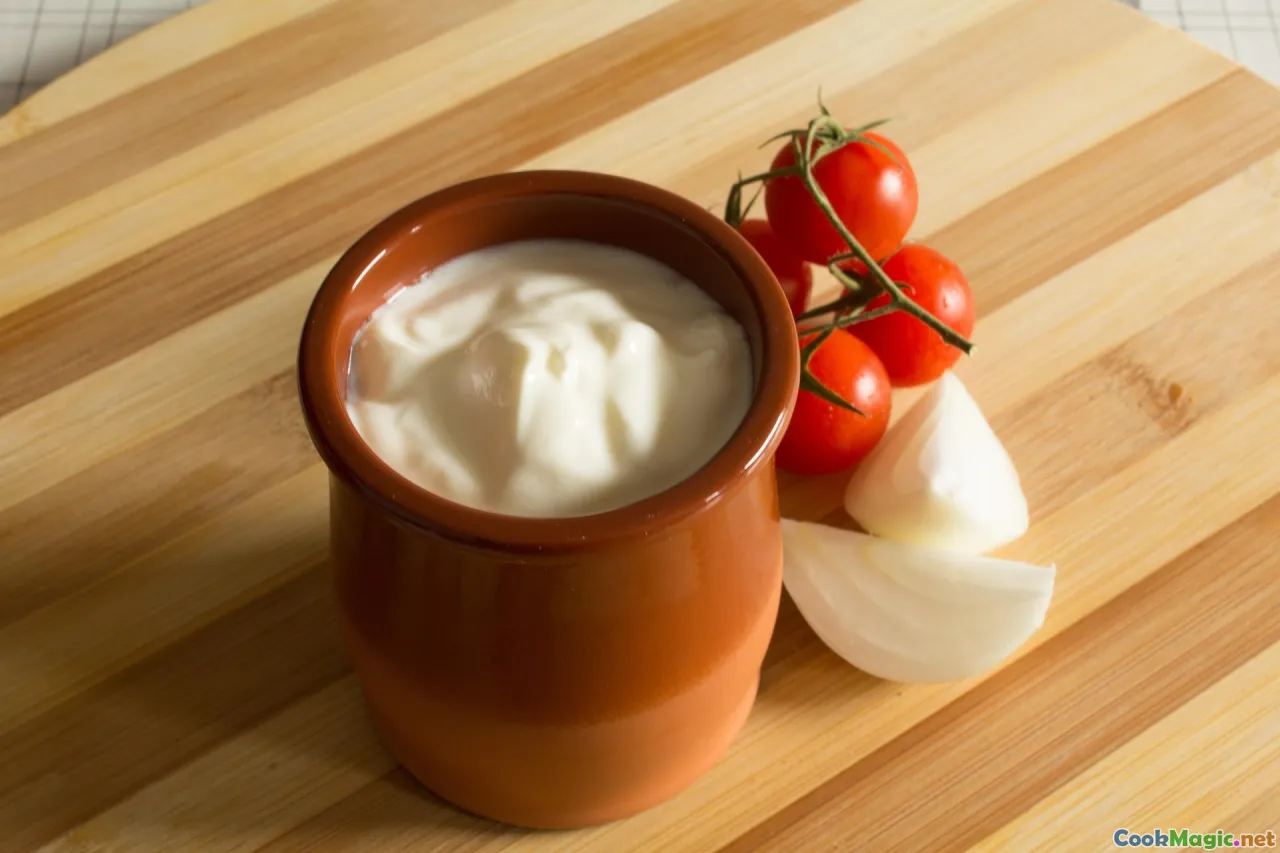
Everything rises or falls on the paprika. Buy Hungarian paprika labeled édesnemes for sweet, clean heat and a ruby tone. Freshness matters. Paprika that has sat at the back of a pantry for a year will taste dusty and bitter. Crack a new tin and inhale: a good one smells like sundried peppers and a memory of summer. For a warmer, slightly smoky undertone, a touch of félédes or even csípős can be folded in, but take care. The soul of Hortobágyi is sweetness and depth, not scorch.
Hungarian cooks are pragmatic about fat. Pork lard is traditional, and for good reason: it carries flavor and has the right smoke profile for sweating onions leisurely. If you cannot face lard, a two-to-one blend of butter and sunflower oil will get you most of the way there. The onion is an ingredient more than a mere aromatic. Use a lot. When in doubt, add another half onion. The goal is a jammy sweetness that buoys the paprika.
As for sour cream, reach for a rich, full-fat version. Hungarian tejföl is dense, almost spoon-standing, around 20 percent fat. It will not break easily when heated gently and adds the dairy tang that defines the sauce. If you are using a thinner sour cream, stabilize it by stirring in a teaspoon or two of flour before tempering with a ladle of hot sauce. The result is less fragile and a tad glossier.
In the palacsinta batter, milk forms the backbone and soda water adds lift. Some cooks slip in a spoonful of melted butter or a drizzle of lard; others keep the batter lean and rely on a swipe of fat in the pan to do the browning. Both can work. I prefer a whisper of melted butter in the batter itself, which gives the pancakes a tender, almost custardy pliability.
Shopping in Budapest: a personal loop through the Great Market Hall

On a crisp morning not long ago, I walked the echoing aisles of the Great Market Hall on Vámház körút, a shopping list tucked into a pocket and the intended dish already simmering in my head. It is touristy, yes, but the vendors still sell to neighbors, and if you buy with your eyes and ears open you will come away with things worth cooking.
At a stall with pyramids of peppers and jars of paprika in simple paper-wrapped tins, the vendor offered me a pinch of sweet paprika to rub between my fingers. It stained the skin and left a scent like the warm ceiling of a greenhouse. I bought two tins and a short string of pickled wax peppers to serve alongside the finished dish. A butcher cut veal shoulder into fist-sized chunks, instructing me to think stew first, shredding later. At a dairy counter, I pointed to a tub of the thickest sour cream and watched it fall from the spoon like slow velvet. The bag got heavy, and I knew even before I reached home that the dish would be generous.
The point is not that you must go to Budapest to make Hortobágyi palacsinta. The point is that it rewards good shopping anywhere. Choose onions by weight, paprika by smell, meat by marbling, sour cream by its enthusiasm.
How to make Hortobágyi palacsinta step by step
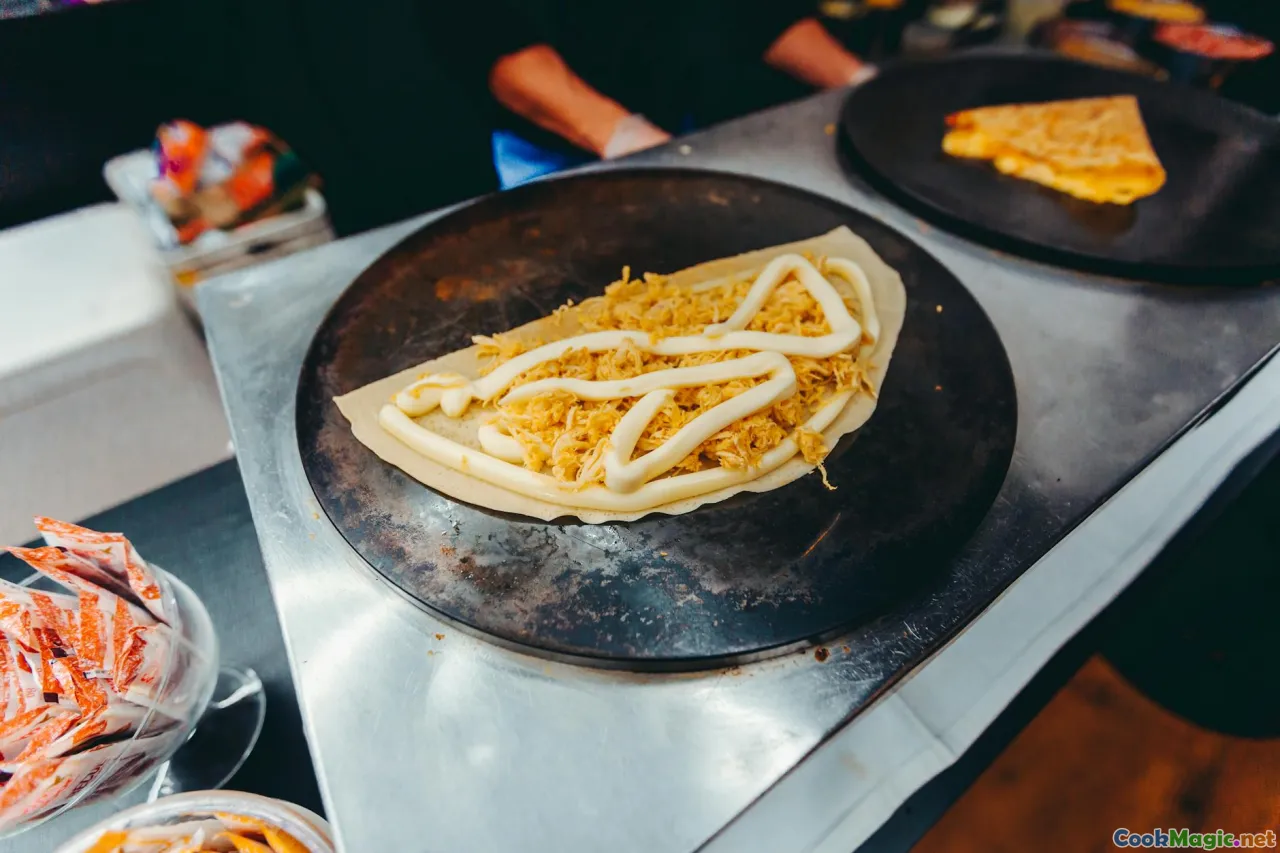
This is a dish of parts that become more than the sum. Break it into three acts: the palacsinta, the paprikás ragout, and the assembly and bake. The process is meditative and deeply practical. The reward is a pan that can feed a table with something that tastes like it took your whole day yet leaves you time for a glass of wine.
Act I. Palacsinta batter and pancakes
- In a bowl, whisk 2 large eggs with a pinch of salt and a half teaspoon of sugar until fluid.
- Add 1 cup all-purpose flour and start whisking in 1 1/4 cups milk gradually to avoid lumps. When smooth, whisk in 1 tablespoon melted butter and about 1/2 cup soda water until the batter ribbons but runs like cream.
- Let the batter rest 20 to 30 minutes. Resting relaxes the gluten and gives you pliable pancakes.
- Heat a 22 to 24 cm nonstick or well-seasoned pan over medium heat. Swipe with a thin film of lard or neutral oil.
- Pour in just enough batter to coat the bottom as you tilt the pan. Aim for thin; you should almost see the pan peeking through in places.
- Cook until the edges pluck up and freckles appear, about 45 to 60 seconds. Flip and cook the second side briefly. Transfer to a plate and cover with a towel. Repeat until you have 8 to 10 palacsinta.
Tip: The first pancake is a test. Adjust heat and batter thickness. If the pancake tears easily, add a spoon of flour; if it feels thick, drizzle in a splash more soda water.
Act II. Paprikás ragout
- In a heavy pot, warm 2 tablespoons lard over medium heat. Add 2 large onions, finely chopped, a pinch of salt, and cook slowly until translucent and sweet, 10 to 15 minutes. Do not rush; raw-tasting onion is the enemy here.
- Pull the pot off the heat for a moment, then stir in 1 1/2 to 2 tablespoons sweet Hungarian paprika, plus a 1/4 teaspoon caraway seeds ground or lightly crushed. The brief pause off the heat protects the paprika from burning.
- Return the pot to low heat. Add 2 cloves garlic, minced, and 1 small Hungarian green pepper, chopped, and 1 small ripe tomato, peeled and chopped (or 1/2 cup canned crushed tomato in winter). Stir until the vegetables slump.
- Add 700 to 800 grams veal shoulder cut into chunks, or chicken thighs if you prefer. Toss to coat in the paprika-onion base.
- Pour in 1 1/2 cups light stock or water, just enough to barely cover. Add a bay leaf. Bring to a simmer, cover partway, and cook gently until the meat yields to a fork, 45 to 60 minutes for chicken, a bit longer for veal.
- Lift the meat out onto a board with a slotted spoon. Reduce the sauce until thick and glossy. Fish out the bay leaf.
- Shred or chop the meat into bite-sized strands. Taste the sauce; it should be savory and slightly sweet from onions, with paprika forward. Adjust salt.
- In a small bowl, stir 3/4 cup sour cream with 1 teaspoon flour to stabilize. Whisk a ladle of hot sauce into the sour cream to temper, then stir the mixture back into the pot over low heat. Do not let it boil hard; it should sigh at a whisper of heat until velvety.
- Reserve about 1 cup of the sauce for topping. Stir the shredded meat back into the remaining sauce so it is moist but not soupy. If it feels dry, add a spoon or two of the reserved sauce.
Act III. Assembly and bake
- Heat the oven to 180 C. Butter a shallow baking dish large enough to hold the rolled pancakes snugly.
- Lay a palacsinta flat, spoon a ribbon of the meat filling down the center or slightly off-center, then roll or fold envelope-style: bottom up over filling, sides in, then roll to form a tidy parcel.
- Nestle the filled pancakes seam-side down in the baking dish. Spoon the reserved sauce over the top, letting it run into the seams. You want coverage, not drowning.
- Bake 10 to 15 minutes until the sauce is bubbling at the edges and the tops take on the faintest browned freckle.
- Serve hot with a spoon of additional sour cream, chopped parsley, and a few slices of pickled wax pepper on the side.
The first forkful should be soft but structured: pancake yielding, filling plush, sauce clinging. The aroma will be paprika and onion first, then meat, then the tang of sour cream.
Technique clinic: paprika bloom, sour cream temper, the gentle fold

Paprika bloom: Hungarian paprika needs to bloom in fat to realize its color and flavor. But it is fragile. The sweet sugars in paprika will scorch if you add it to a pan that is aggressively hot. The trick is to sweat onions until they are glossy and translucent, then pull the pan off the heat, stir the paprika into the warm fat so it dissolves into a paste, and return the pan to low heat. If you see smoky wisps the moment paprika hits the fat, you were too hot; the result will be bitter. Better to err on the side of too cool, then coax the heat back up.
Sour cream temper: Tejföl breaks if shocked. Tempering is your insurance: whisk hot sauce into sour cream gently to raise its temperature before adding to the pot. Stabilizing with a little flour turns the dairy into a reliable liaison, smoothing the sauce while helping it cling to the pancakes. Keep the pot below a simmer after adding the sour cream. Think of it as keeping the sauce calm.
The gentle fold: You can roll these like burritos, or fold them into neat rectangles. The rectangle has a pleasing geometry on the plate and tends to hold sauce at the seams. Either way, do not overfill. Let the pancakes be an equal partner to the filling.
Pan heat: Ignore bravado recipes that suggest high heat for palacsinta. Medium is your friend. The goal is an even golden face, not spotty sear. An over-hot pan makes rubber; too cool and you will be waiting forever.
Variations worth a detour
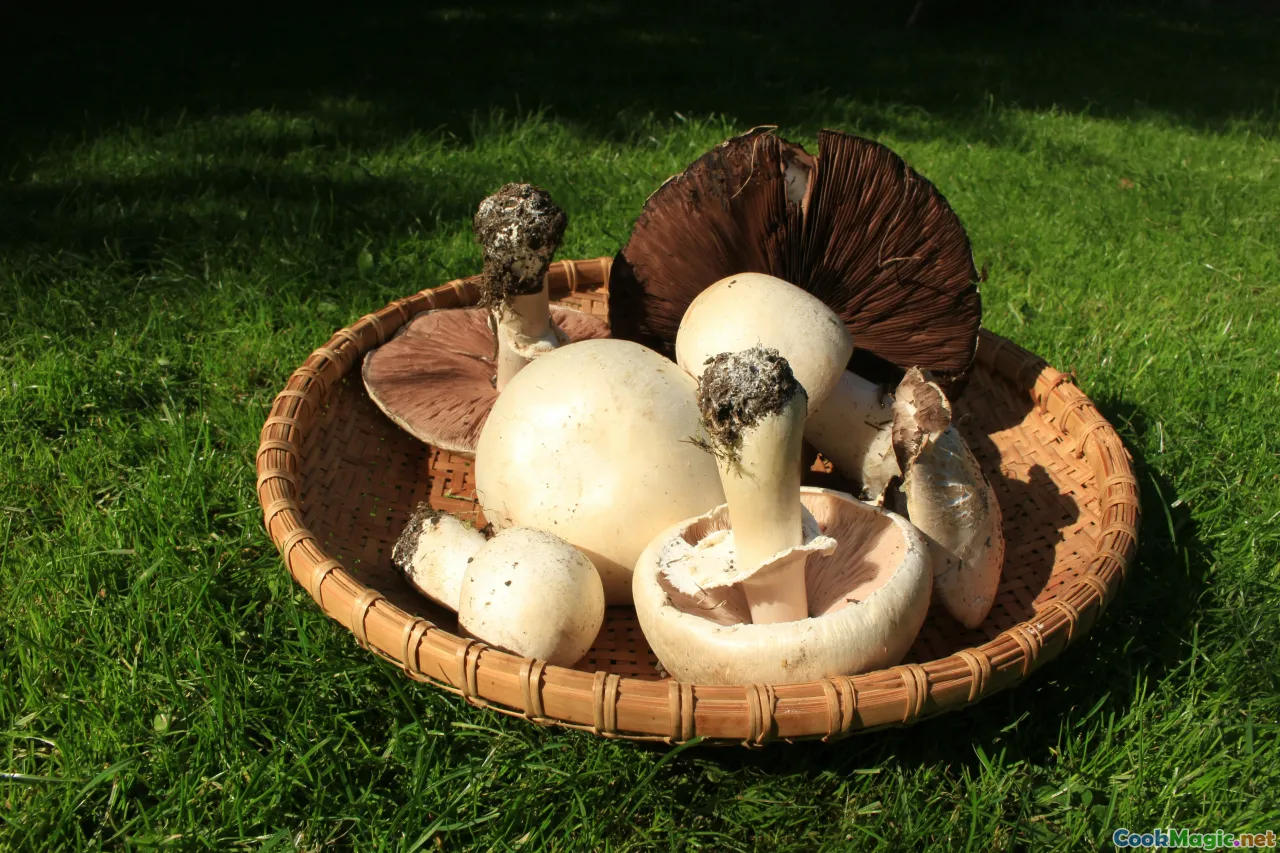
-
Chicken paprikás filling: Dark-meat chicken thighs are wonderful here, and many households use them instead of veal. The flavor is rounder, a bit richer. The technique stays the same, but watch the simmer time; chicken surrenders faster.
-
Mushroom and smoked paprika: For a vegetarian nod that still feels Hungarian, use a mix of cremini and wild mushrooms, sautéed until their water cooks off and they take color. Build the same onion-paprika base, use a smoky pinch of füstölt paprika, and moisten with vegetable stock. Add a splash of Tokaji dry wine for perfume. Finish with sour cream as before. The texture will be softer; add a few toasted walnuts for bite if you like.
-
Duck legs and red wine: Duck legs braised in a paprika-onion base with a little red wine make a luxurious filling. After shredding, reduce the braising liquid until sticky. The sour cream will need careful tempering to avoid breaking with the wine’s acidity. The result is winter on a plate.
-
Pork and caraway: Pork shoulder loves caraway. Use a slightly heavier hand with the seed and finish with a whisper of mustard stirred into the sour cream. This is less orthodox but deeply satisfying.
-
Veal and liver: In a fancy turn I once tried at a dinner in Budapest, the filling was classic veal with a few sautéed cubes of goose liver folded in at the last second. The heat barely kissed them so they bled richness into the sauce. It was outrageous. If you go this route, keep portions small; it is a starter that eats like a main.
Across all these, the same rule holds: the filling must be moist but structured, the sauce abundant enough to paint but not swamp, the pancake tender enough to agree to being rolled without protest.
A cook’s story from the Puszta
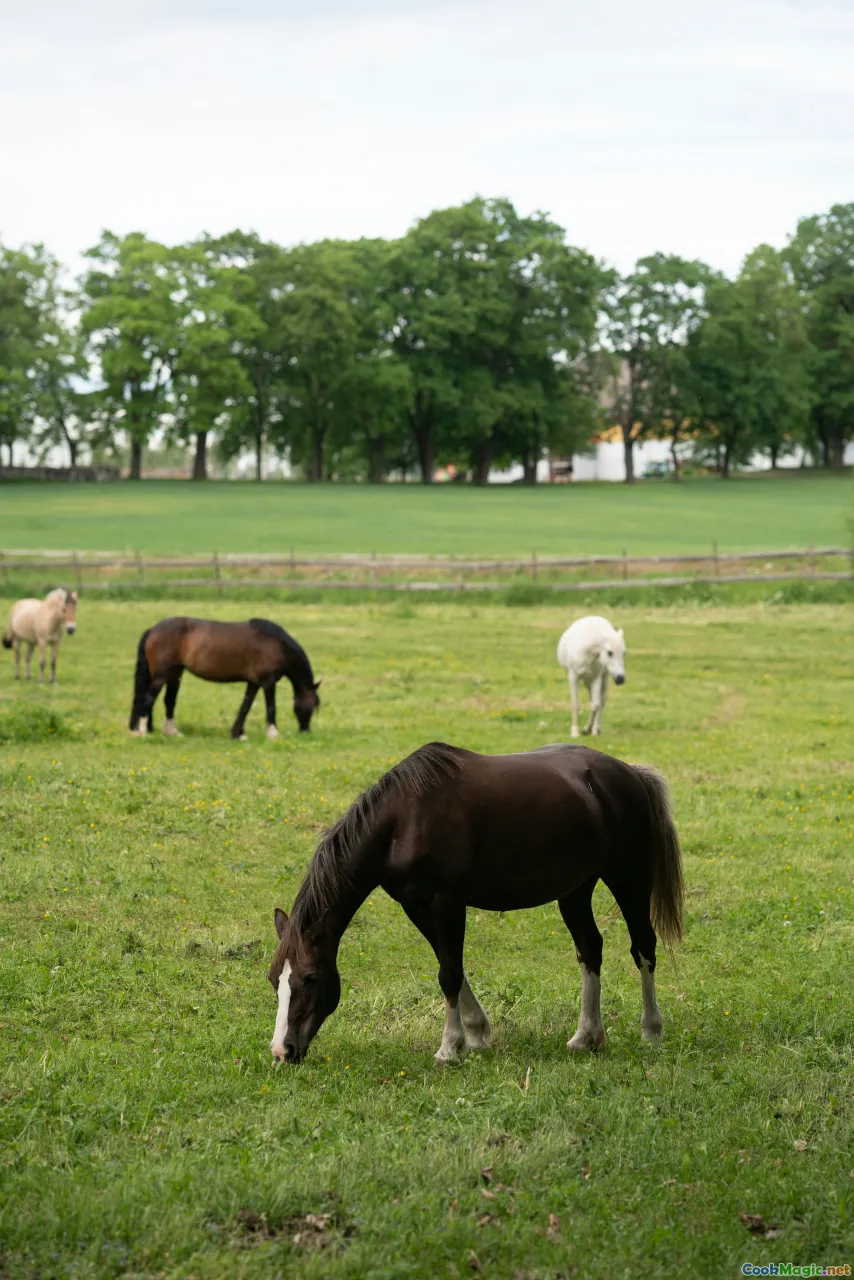
At the Nagycsárda in Hortobágy, I asked to peek into the kitchen. The cook, a woman with arms that had lifted more pots than I had written paragraphs, pointed with her chin to the steam-shrouded back burner. There, onions were softening in pork fat in a pot that could have bathed a toddler. She lifted the lid only a finger’s width and I caught the scent of green pepper and tomato cooking down. The paprika went in with a reverence that bordered on ceremony, and she removed the pot from the heat to stir, just as she had been taught by her mother and grandmother. When I asked about the pancake batter, her smile tucked into one corner of her mouth.
Soda water, she said, always, and a little melted butter if you want to be kind to your guests. When I asked about veal versus chicken, she shrugged. We cook what we have and what makes sense. Today it is chicken because the farmers brought many.
The plate I ate that day tasted both careful and inevitable. The pancakes were folded into rectangles, their corners intact, the sauce a ribbon across the top rather than a blanket. A little dill in the cucumber salad, a few thin coins of pickled pepper, and a half glass of Kadarka that tasted like cherries and smoke. The memory sits at my table every time I sauté onions.
Serving and sides: set the table like a Hungarian host

Hortobágyi palacsinta wears its sauce proudly, so set the plate to let that color show. A white dish makes the paprika sing. Finish with a spoon of sour cream kissed with a pinch of paprika or chopped parsley for green relief. The supporting cast matters.
-
Uborkasaláta: Thinly sliced cucumber in a simple vinaigrette of vinegar, sugar, salt, and water, sometimes with a sliver of garlic and a handful of dill. Serve it cold; the cool acidity cuts through the richness.
-
Kovászos uborka: Sun-fermented pickles that taste like summer in a crock. If you do not have them, any good sour pickle will do.
-
Csalamádé: A mixed salad of cabbage, peppers, and carrots in a sweet-sour brine. This crunch is welcome.
-
Bread: A simple crusty loaf, ideally with a tight crumb to help you chase the sauce.
For a dinner that maps Hungary on a table, begin with a small bowl of gulyásleves, follow with Hortobágyi palacsinta as a hot starter, and proceed to a simple roast or even a tangy túrós csusza if you want to stay in the noodle lane. But truthfully, two filled pancakes with salad and wine make a generous main on their own.
Wine and drink pairings

Red or white both work, provided you think about acid and spice.
-
Kadarka: Light, spicy, cherry-bright, with enough peppery snap to echo the paprika without bludgeoning it. Chill it lightly.
-
Egri Bikavér: Bull’s Blood can be brooding or buoyant depending on the producer. A balanced one with red fruit and gentle tannins is a friend to veal or pork versions.
-
Dry Furmint: From Tokaj, this white can be riffled with acidity and a mineral spine. It slices through the sour cream and refreshes the palate.
-
Kékfrankos: For duck variations or on a cold night, this gives a blue-fruited, peppered hug.
If you are not drinking wine, a light lager or a spritz of fröccs, the Hungarian wine spritzer, is pitch-perfect. A shot of apricot pálinka as an aperitif is very Hungarian indeed, but be warned: it has a way of making the sauce taste even better and the evening last longer.
Tips from Hungarian kitchens
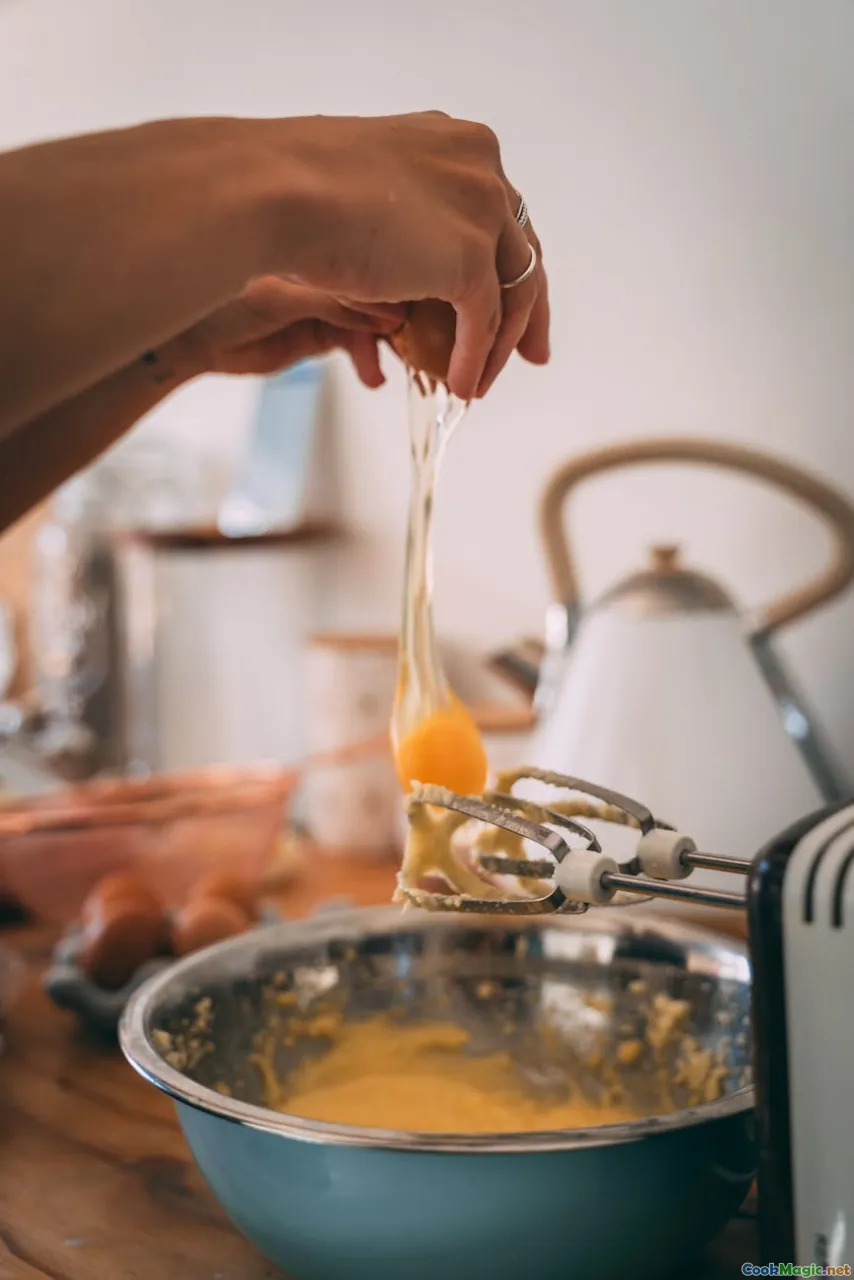
-
Rest the batter: Even ten minutes makes a difference in palacsinta pliability. Thirty is better.
-
Onions first: Err on the side of more onions. The sweetness and body they provide is the foundation of the sauce. Chop them fine for faster, more even cooking.
-
Gentle simmer: Meat turns stringy under a hard boil. Keep the pot to a lazy simmer, lid slightly ajar.
-
Keep it glossy: Reduce the sauce until it glides off a spoon in a smooth sheet. Greasy pools mean you need to emulsify more with sour cream or whisk in a spoon of sauce briskly off heat.
-
Make ahead: The filling can be made a day ahead. Reheat gently, refresh with a spoon of water or stock if it tightened overnight. Pancakes keep well under a towel at room temperature for a few hours or in the fridge, stacked with parchment between, for a day.
-
Freeze wisely: You can freeze filled, unbaked palacsinta. Thaw overnight in the fridge, top with sauce, and bake as directed. The texture is a touch softer but still comforting.
-
Pepper paste: A small squeeze of Piros Arany, the Hungarian pepper paste, can add depth in winter when fresh peppers are shy. Stir it into the onion base before the paprika.
Troubleshooting: why is my sauce split, my pancake tough, my filling bland

-
Split sauce: Sour cream broke because the sauce was boiling or the cream was too cold. Next time, stabilize the sour cream with a pinch of flour, temper with hot sauce, and keep the pot below a simmer. If it splits, whisk in a splash of cold cream off heat to encourage it to come back together; it might not be perfect, but it will be better.
-
Bitter note: Paprika burned. Always bloom off direct high heat, then bring back to gentle heat.
-
Tough pancakes: Batter over-mixed or pan too hot. Mix just until smooth, rest the batter, and use medium heat. Also, lift the pancake from the pan as soon as it releases easily; overcooking dries it out.
-
Bland filling: Salt your onions at the start to draw out their water and intensify sweetness. Taste at each stage. Reduce the sauce sufficiently before adding sour cream, so you are not diluting flavor.
-
Watery bake: Filling too wet. It should mound on a spoon, not slosh. Reduce sauces, squeeze a touch of sauce out of the meat if necessary, or set the filled pancakes in the dish for five minutes before saucing and baking to let them settle.
Where to taste it in Hungary
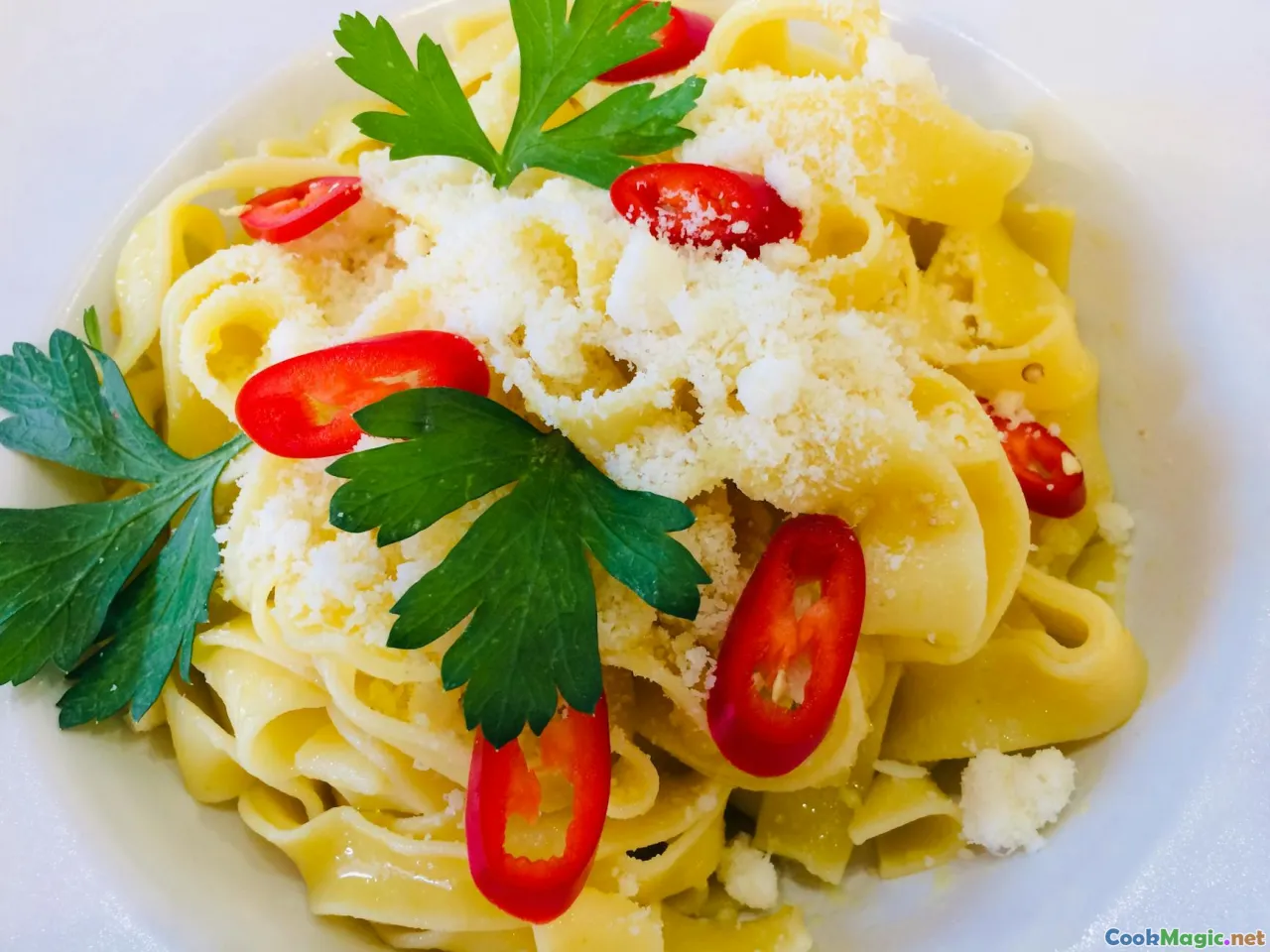
Budapest is the easiest place to find Hortobágyi palacsinta, and it appears on menus that tilt both homely and grand. Gundel has played with the form and sometimes presents it in a way that showcases their characteristic sauce craft. In home-style eateries across the city, you will find versions that lean heartier, often with chicken. Seek out places that treat paprikás with respect; the same care will flow into the pancake.
On the Puszta, the Nagycsárda in Hortobágy National Park serves a rendition that tastes in conversation with the landscape itself. The sauce carries the quiet sweetness of onions that cooked while the wind scraped across the plain. Nearby csárda along the Tisza River often extend the paprikás logic to fish; while that is another story entirely, it teaches you about the Hungarian way with paprika and onions, which will serve you well when you return to your own stove.
How it feels to cook and serve this dish
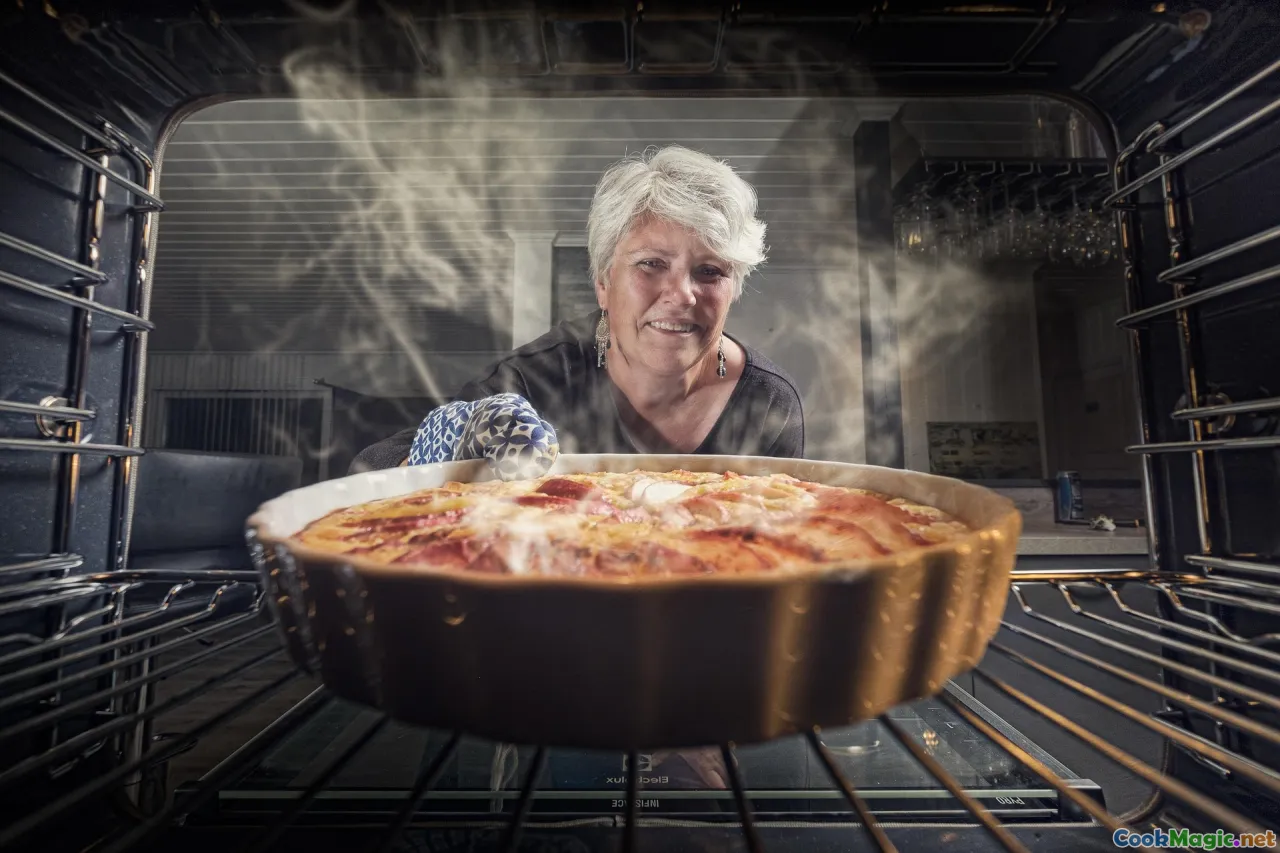
There is a moment, whisking sour cream into a pan that smells like paprika and patience, when you realize you are making more than dinner. You are choreographing a gesture. The folding of the pancakes is a kind of wrapping, the kind you do for someone you care about. The bake sets everything not into rigidity but into coherence. And then you slice in and the sauce sighs out and the kitchen, for a minute, is a small Hungarian inn in your own home.
I have cooked Hortobágyi palacsinta for people at the ends of long weeks and at the beginnings of trips. It turns a table into a listening place. People talk while eating it, and between bites they exhale in that way that signals good food has been placed in front of them. If there is a child at the table, they will likely ask for an extra drizzle of sauce and leave their pickles untouched; if there is an older aunt present, she will eat the pickles and lecture you on whether chicken or veal is the proper choice. It is a dish that invites opinion, but only after the first plate is cleared.
Beyond the pancake: what this dish says about Hungarian cuisine

Hungarian cuisine is a language of essentials: onion, fat, paprika, pepper, sour cream. The elegance comes from pacing and harmony. Hortobágyi palacsinta is a perfect ambassador because it emphasizes thrift without feeling austere. It takes a stew, serves part of it straight as sauce, stretches the rest as filling, and wraps it in a pancake that costs pennies to make. It is the kind of cuisine that survived wars and winters by knowing how to make a little into more.
Historically, Hungary has been a crossroads, and the palacsinta itself is evidence of lines in culinary maps that bypass borders. Yet the way Hungary treats its pepper powder, the way sauce and dairy are allowed to dance, and the way a dish can be named for a landscape as a promise rather than a provenance, speaks to a national palate that values comfort, brightness, and a quiet flourish.
As much as people joke that everything in Hungary is paprika, the truth is that everything in Hungary is patience; the paprika only reveals itself to those who wait a minute, stirring off the heat, breathing in the sweet red scent before moving on.
A cook-along: timing and flow for a dinner party
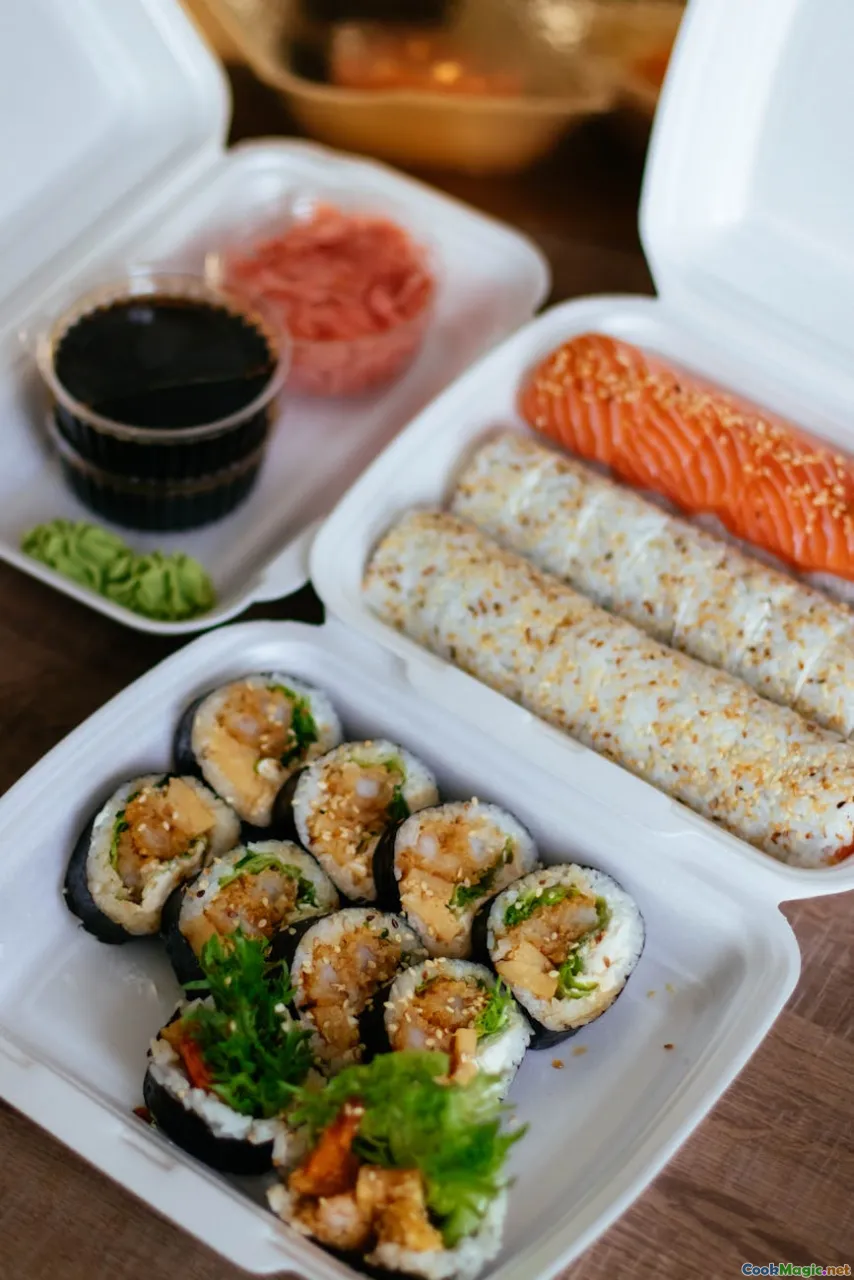
Two hours before guests arrive:
-
Make the paprikás ragout through the shredding stage. Reduce the sauce and temper in sour cream. Hold one cup of sauce back for topping. Combine the rest with the meat and keep it warm on low or transfer to a container and warm gently later.
-
Mix the palacsinta batter and set it to rest.
An hour before:
-
Cook the pancakes and stack them under a towel. The heat from stacking helps keep them supple.
-
Assemble the salads and set pickles out. Chill the wine or put reds in a cool hallway.
Thirty minutes before:
- Fill and fold the palacsinta into the buttered dish. Spoon the reserved sauce over the top. Hold at room temperature if your kitchen is cool.
Fifteen minutes before serving:
- Bake until hot and gently bronzed. Heat a small pan to bloom a pinch of paprika in a teaspoon of butter, then swirl it into a spoon of sour cream for a garnish.
At the table:
- Serve two per person with salad. Keep extra sauce warm in a small saucepan. Let people spoon their own joy.
This way, you are not trapped at the stove when the bell rings, and the dish arrives both peasant and polished.
Tastes and textures: a sensory map

Sight: The sauce is a confident brick-red with a creamy opacity. The pancakes gleam at the edges, with the faintest crisp line where heat met batter.
Smell: First, the sweetness of onions that had time; then the musk of meat; then the high note of paprika; and finally the tangy softness of sour cream.
Taste: The paprika leads but does not strut. A little warmth, a lot of sweetness, a savory bass line from the meat and onion, then that cooling cream that steps in like a friend at the right moment.
Texture: The pancake is thin and elastic, like a good scarf that stretches but does not lose shape. The filling is plush, with shreds that slide rather than clump. The sauce clings in a sheet that is neither greasy nor watery. A bite of pickle snaps like a cymbal.
What to do with leftovers
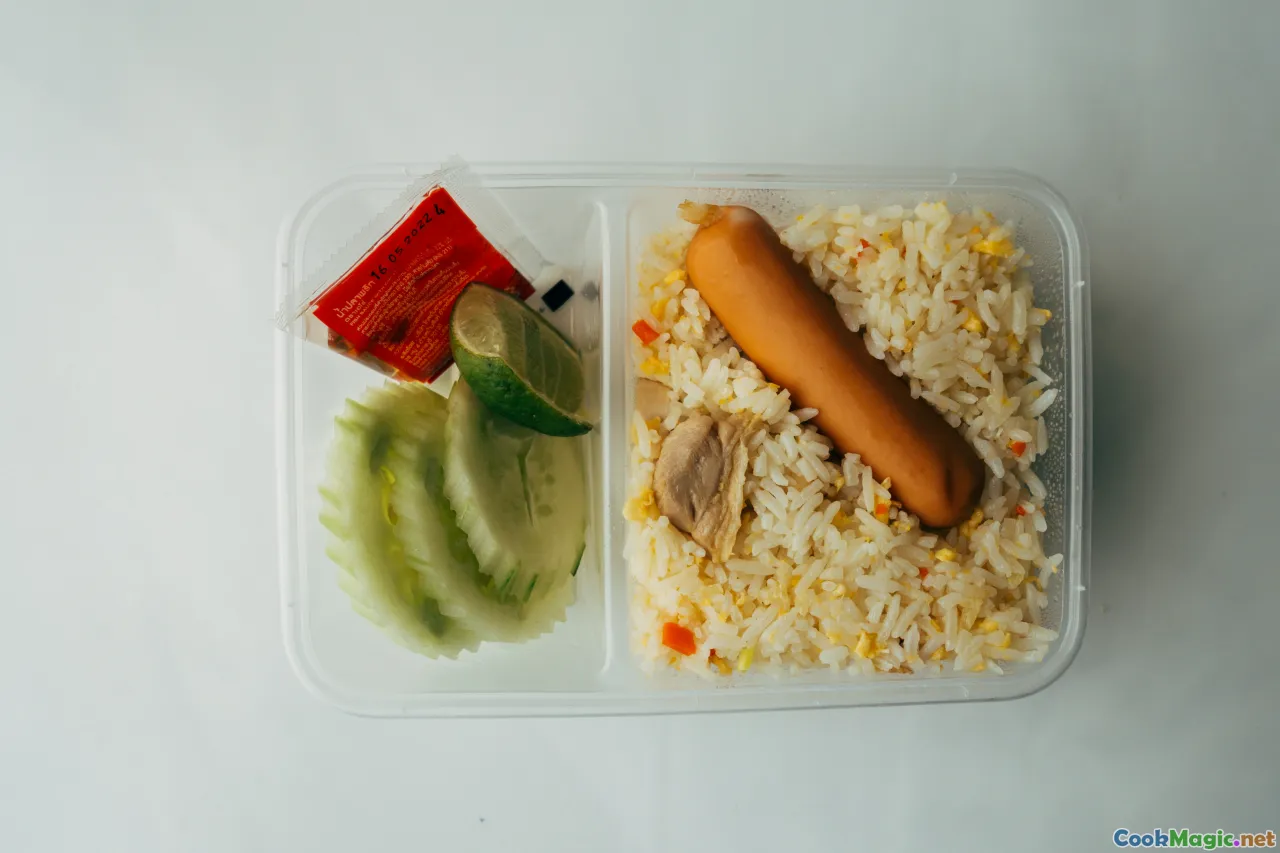
Hortobágyi palacsinta reheats well for lunch. Store in a covered container with extra sauce spooned over to keep things supple. Reheat in a low oven covered with foil until warmed through. The microwave works in a pinch, but the sauce may separate slightly. If that happens, stir the top before you eat and remember that perfection is not always the goal of comfort food.
Leftover paprikás filling goes beautifully on buttered toast under a fried egg, or spooned over rice with a dollop of sour cream. Leftover pancakes can be turned into breakfast with apricot jam, a head-swiveling sweet-salty pivot the next morning.
The long goodbye of a good sauce
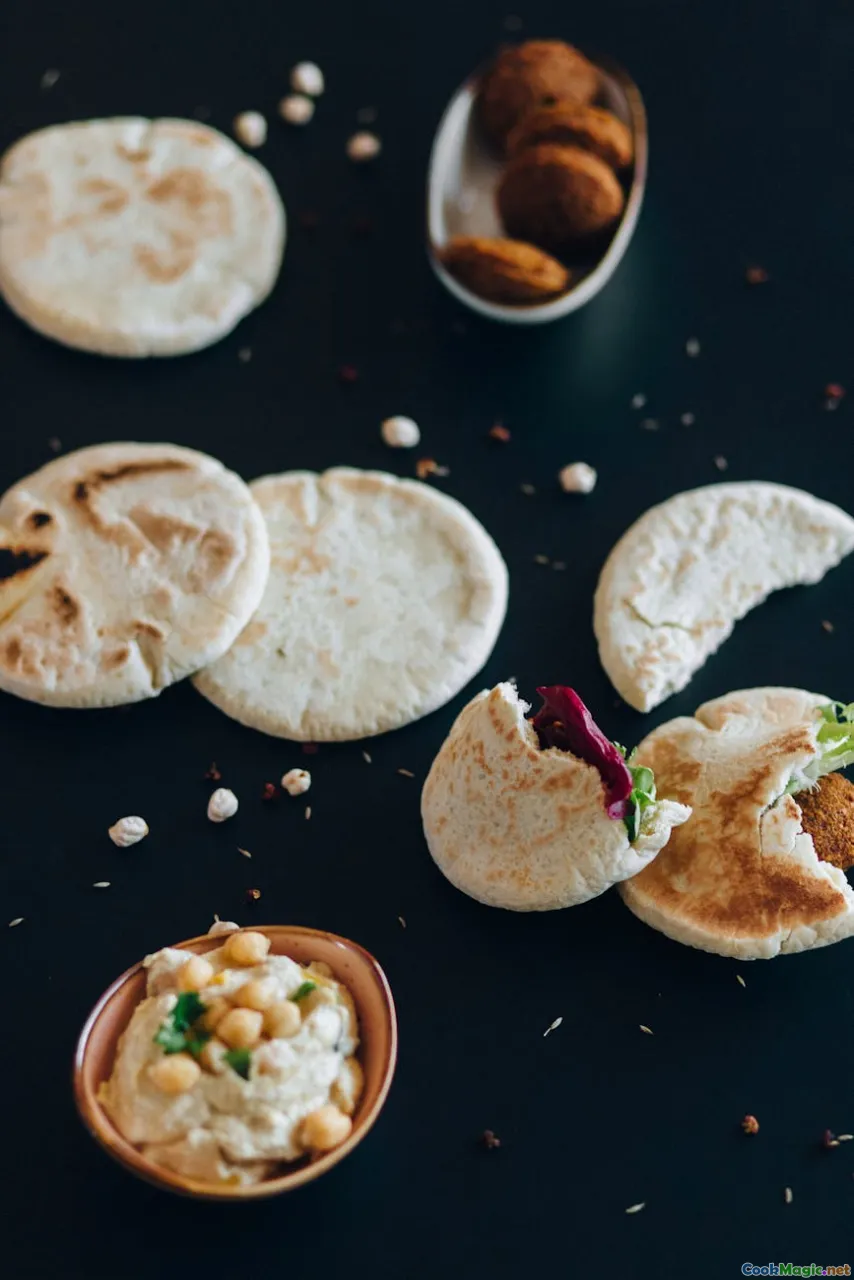
Cooks fall in love with sauces more than they admit. There is something about seeing one come together that feels like being let in on a secret. The paprika and onion, at first, are just red and white. Then they become a third thing. Add sour cream and time, and you get something that tastes like the space between gratitude and appetite.
When you make Hortobágyi palacsinta, you are borrowing a gesture from Hungarian cooks who have been taming onions and paprika for generations. You are cooking something that was named for a landscape because its flavors are wide and generous, because its sauce can cover not only a pancake but a day. You are making a dish that is as much about listening to the gentle simmer of a pot as it is about serving a plate.
The last bite is usually the sauciest, and it is customary to use bread to chase it around the plate. Do it. There is no point in pretending this dish is about restraint. Let the sauce take a long goodbye. You can think of the plains as you do, a red horizon under a wide sky, and know that somewhere, someone else is stirring paprika into fat off the heat, waiting patiently for the scent to rise, and smiling when it does.









